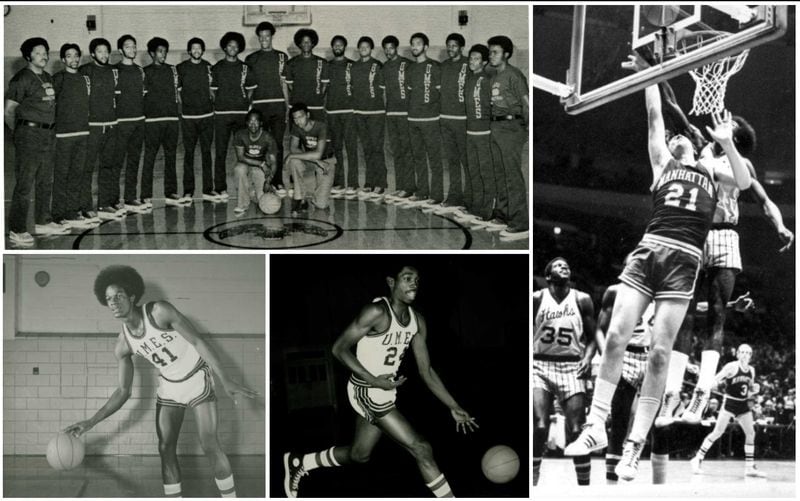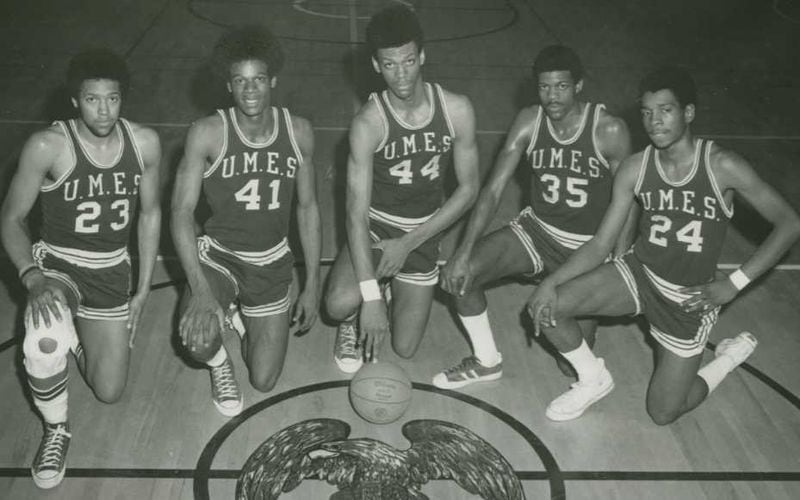There isn’t much that’s special about Princess Anne, Maryland. It’s a tiny town of about 4,000 people in the state’s poorest county nestled on the Delmarva Peninsula.
But for one remarkable season — in 1974 — it was near the top of the college basketball universe.
That’s the year that the University of Maryland Eastern Shore Hawks and their high-powered offense went 27-2 and broke a racial barrier by becoming the first men’s basketball team from a historically black college to receive an invitation to one of college basketball’s two premier tournaments, the NCAA or the NIT.
John Bates, head coach of the Hawks, told Sports Illustrated he wanted an at-large bid to the NCAA tournament. At the time, the tournament was much smaller, fielding just 25 teams. The Hawks couldn't crack the NCAAs, but the NIT came calling and the Hawks happily accepted a trip to Madison Square Garden.
An HBCU didn’t make the NCAA tournament until Alcorn State cracked the field in 1980, when its field expanded to 48 teams.
READ | Roswell High grad makes documentary about record-setting NBA player
READ | Dolemite: The 'Citizen Kane' of kung fu pimping movies
But playing in the NIT and breaking down a wall for HBCUs came at a cost for the Hawks. Maryland Eastern Shore was a member of the NAIA, another collegiate athletic association, and it wanted the Hawks to play in its tournament. But Eastern Shore wanted the bigger stage. Bates took his team to the NIT, and the NAIA imposed financial and probationary penalties.
"We thought this was the stepping stone," Bates told ESPN in 2005. "Not only for us, but for all black schools. We were pioneers, and we were going to accept any penalty. Any black school would have done the same thing."
In today’s world of college hoops, at least two HBCUs get admitted to the 68-team tournament each year by way of at-large bids for the Mid-Eastern and Southwestern athletic conferences. But in the 1970s, the NCAA tournament and the NIT were very difficult to get into, especially for smaller schools, and even more so for HBCUs.
Maryland Eastern Shore needed a very entertaining and extra efficient offense to get national attention and gain respect. Under the direction of Bates, and with Talvin Skinner, Joe Pace and Rubin Collins running the floor, the Hawks had one of the most lethal scoring attacks the game has ever seen.
“The whole East Coast was aware of who the University of Maryland at Eastern Shore was,” Skinner told ESPN. “They were taking games off campuses and moving them to arenas.”
Eastern Shore finished with the nation's second-best offense that season, scoring an average of 93.3 points per-game. And this was 13 years before college basketball adopted the three-point shot. According to Basketball-Reference.com, that was nearly two points better than the N.C. State Wolfpack, which won the NCAA tournament in 1974. Oral Roberts had the top offense, scoring .5 more points than the Hawks.
The Hawks won their first 20 games and were ranked No. 20 in the AP poll. The day that poll came out though, the Hawks ran into the “Marvelous” Marvin Webster and the Morgan State Bears. Playing in front of more than 10,500 fans in Baltimore, Morgan State upset Eastern Shore, 72-70. Webster had 20 points, 22 rebounds and seven blocks in that game. He went on to play 10 seasons in the NBA.
It was the Hawks’ lone regular season loss, and it dropped them out of the AP Top 25, but Bates and his squad got revenge when they beat the Bears by 15 points a few weeks later for the MEAC title.
In the NIT, the Hawks won their opening round game by beating Manhattan in Madison Square Garden, 84-81, led by 26 points from Bill Gordon. According to the New York Times, even legendary Boston Celtics general manager Red Auerbach showed up to watch Maryland Eastern Shore.
The Hawks fell to Jacksonville in the second round of the NIT by two points, but their history had been cemented.
READ | 'Roswell Roots' celebrates Black History Month with food, education
READ | Ella Fitzgerald: Most celebrated jazz singer of her generation
The Hawks ended the 1974 season as MEAC champs with an NIT appearance, the nation’s second-best offense and a 27-2 record. To this day, the purple NIT banner is the lone one for men’s basketball that hangs in the rafters at the William P. Hytche Athletic Center in Princess Anne.
Bates left after the 1974 season for Coppin State, and since then Maryland Eastern Shore has had three winning men's basketball seasons. During his tenure in Princess Anne, Bates had a record of 73-14. He died in 2015 at 77, the Baltimore Sun reported.
Collins, the team's leading scorer with 17.8 points per-game, was drafted by the Portland Trailblazers in the 1974 NBA Draft. Skinner, who averaged a double-double for the Hawks, was drafted by the Seattle SuperSonics and played two NBA seasons. Pace followed Bates to Coppin State and later won an NBA title with the Washington Bullets. A fourth Hawk, Gordon, was also drafted by Seattle.
"It was amazing to be around that team and to watch them play, to come in the gym and have it be packed for the junior varsity team and you look up there and you see so many white faces," Bates told DelmarvaNow.com in 2015. "That meant a lot."
About the Author







